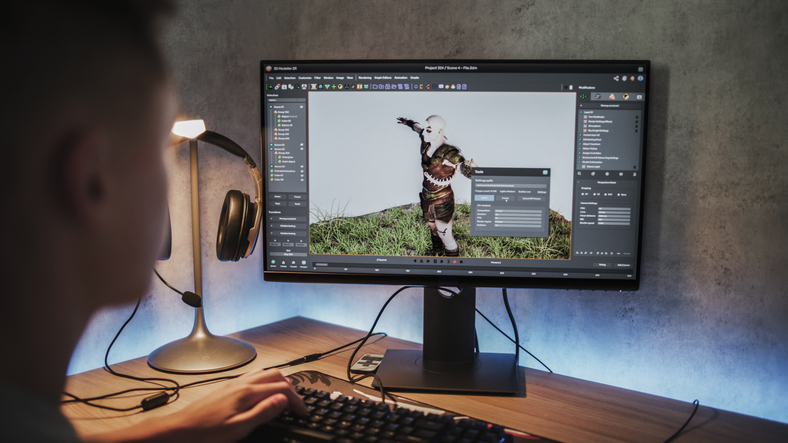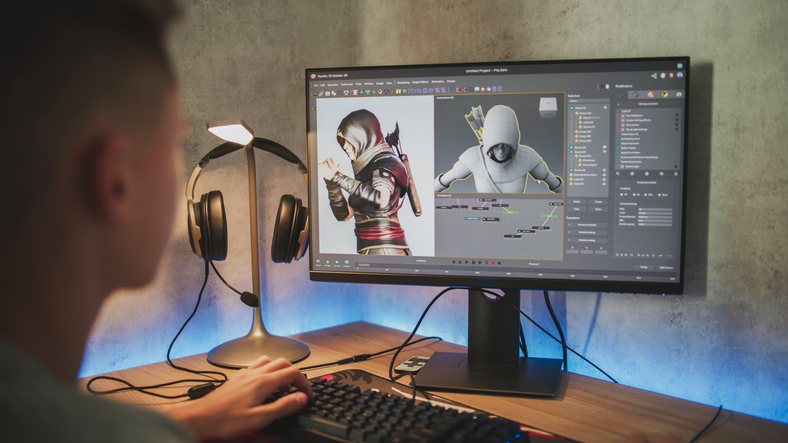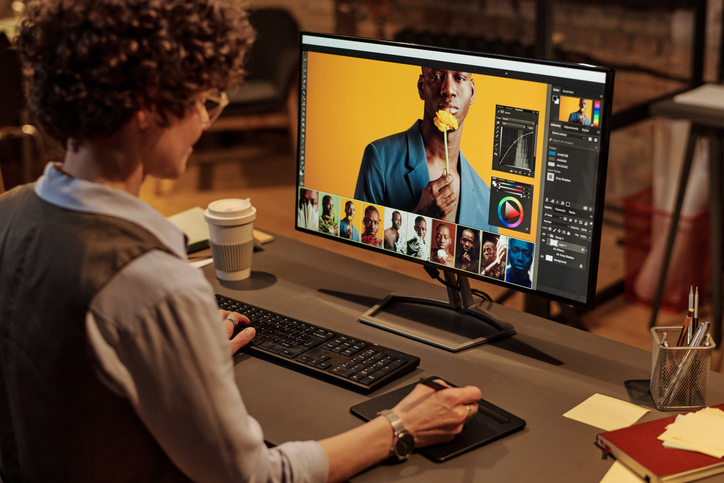Graphic design is more than just making things look beautiful, it's about solving problems, telling stories, and creating visual experiences that engage, inform, and inspire. In our image driven digital world, graphic designers are at the forefront of shaping how we see and understand the world around us. But what skills do graphic designers need to succeed in such a dynamic and competitive field?
Whether you're a student dreaming of a creative career or someone considering a career change, understanding the essential skills of a graphic designer is the first step. In this blog, we'll explore the core technical and soft skills that aspiring graphic designers should master and show you how the Graphic Design Diploma Program at VCAD (Visual College of Art and Design) can help you develop them.
What is Graphic Design?
At its core, graphic design is visual communication. It combines art and technology to convey messages in a compelling way. Designers use typography, imagery, colour, and layout to create visuals that not only look great but also serve a strategic purpose. From eye catching advertisements and engaging websites to memorable logos and stunning product packaging graphic design is everywhere. It’s a discipline that blends creativity with problem solving, where every design has a function. Whether the goal is to boost brand recognition, simplify information, or influence behaviour, the power of design lies in its ability to connect with people emotionally and visually. Graphic designers work across various industries marketing, tech, fashion, education, publishing, and entertainment making this career both versatile and rewarding.
What Skills Do Graphic Designers Need?
Success in graphic design requires a unique balance of technical expertise and creative soft skills. Let’s break down what these looks like:
Technical Skills
1. Mastery of Industry Standard Software
Graphic designers must be fluent in the tools of the trade. These include:
- Adobe Photoshop for photo editing, manipulation, and digital painting
- Adobe Illustrator for creating vector graphics, logos, and icons
- Adobe InDesign for layout design in brochures, books, and magazines
- Adobe XD and Figma for UX/UI design and wireframing digital experiences
At VCAD’s Graphic Design Diploma Program, students receive hands on training in these tools, graduating with the confidence and technical skills expected by employers in Canada’s competitive creative market.
2. Typography
Typography is more than picking a pretty font. It’s about choosing the right typefaces, setting them with appropriate spacing, kerning, tracking, and leading, and ensuring readability and emotional resonance in design.
3. Colour Theory and Layout Design
Understanding colour psychology, contrast, harmony, and balance is critical. A designer must know how to combine colours to evoke specific feelings or actions and arrange elements on a page to guide the viewer’s eye.
4. UX/UI Design Basics
Modern graphic designers often collaborate with UX/UI teams. Knowing the fundamentals of user experience design helps you create visuals that are not only beautiful but also intuitive and accessible.
5. Designing for Print and Digital Media
Print design requires an understanding of bleed, trim, paper types, resolution, and CMYK vs RGB colour models. Digital design involves responsiveness, screen resolution, and interactivity. VCAD’s Graphic Design Diploma Program covers both, giving students the ability to work across platforms.
6. Portfolio Development
Your portfolio is your calling card. Knowing how to build and present one featuring a variety of projects with context and process can make all the difference when applying for jobs or freelance gigs. VCAD’s Graphic Design Diploma Program ensures every student graduates with a polished, industry ready portfolio.
Soft Skills
1. Creativity and Innovation
No surprise here graphic design demands creativity. Whether you're solving a branding challenge or designing a campaign for a nonprofit, your ability to think outside the box is crucial.
2. Communication and Collaboration
Graphic design is collaborative by nature. You’ll work with clients, marketers, writers, and developers. Communicating your ideas clearly and accepting feedback constructively is vital.
3. Time Management
Designers often juggle multiple projects with tight deadlines. Prioritizing tasks and managing time effectively is a must have skill in both agency and freelance environments.
4. Problem Solving and Strategy
Design isn’t just about how things look it’s about what they do. You’ll need to solve communication problems with visual solutions that meet brand goals, resonate with the audience, and stand out in a crowded market.
5. Adaptability and Continuous Learning
Design trends, tools, and technologies evolve constantly. A great designer embraces learning and stays ahead of the curve, whether by exploring motion graphics, AI generated visuals, or sustainable design practices.
VCAD’s Graphic Design Diploma Program
If you're serious about becoming a graphic designer in Canada, enrolling in a comprehensive program like VCAD’s Graphic Design Diploma Program can give you the edge you need. Here’s how VCAD helps you succeed:
✅ Project Based Learning
Learn by doing. You'll work on real world assignments that simulate professional design challenges.
✅ Industry Relevant Skills
Master the Adobe Creative Suite, gain expertise in typography, branding, digital illustration, packaging, and web design.
✅ Flexible Learning Options
With online and campus-based programs in Vancouver and Calgary, VCAD offers flexibility for all types of learners.
✅ Expert Mentors
Study under experienced instructors with deep industry knowledge, who offer personalized feedback and career guidance.
✅ Portfolio Support
Graduate with a diverse, polished portfolio that showcases your strengths and helps you stand out to employers and clients.
✅ Career Services
Get help with resumes, interviews, internships, and job placement ensuring a smooth transition from classroom to career.
Final Thoughts
But to succeed as a graphic designer you need more than just talent. You need technical skills, creative soft skills, and a solid foundation to grow from. VCAD’s Graphic Design Diploma Program gives you just that a launchpad to start your creative career with confidence and purpose. If you're ready to turn your creativity into a meaningful career, VCAD is here to help you make it happen.
FAQ
Is Graphic Design a Good Career Choice in 2025?
Absolutely. With the digital economy booming, businesses across all sectors need designers for branding, social media, websites, apps, packaging, and more. There’s growing demand for skilled graphic designers especially those who understand emerging tools like AI and UX/UI design. Plus, it’s a field that offers flexibility, freelance opportunities, and room for creative fulfilment.
Will AI Replace Graphic Designers?
No, AI is a tool, not a replacement. While AI can assist with repetitive tasks, it lacks emotional intelligence, cultural understanding, and creativity. Human designers bring empathy, storytelling, and originality qualities machines can’t replicate. So, AI will not replace graphic designers.
Do You Need a Degree to Become a Graphic Designer?
Not at all. While some designers pursue a four-year degree, others choose more affordable and focused alternatives like diploma programs. VCAD’s Graphic Design Diploma offers a shorter, hands-on route into the industry equipping you with job ready skills, real world experience, and a portfolio that speaks louder than any degree. So, you do not need a degree to become a graphic designer.
Ready to become a graphic designer in Canada? Explore VCAD’s Graphic Design Diploma Program today and take the first step toward a vibrant, creative future!














